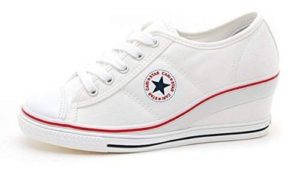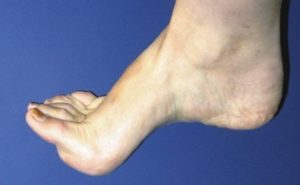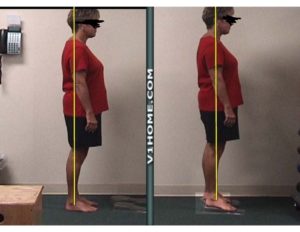Shoe drop – how the pendulum swings

Put on your high-heel sneakers, Lordy
Wear your wig-hat on your head
Put on your high-heel sneakers, child
Wear your wig-hat on your head
Ya know you’re looking mighty fine, baby
I’m pretty sure you’re gonna knock ‘em dead
– Tommy Tucker
Growing up in the 1960s, I remember the song, “Put on Your High-Heel Sneakers.” Until recently, however, I had never seen a pair.

When I started running during the time that song was hot, there were no high heel sneakers available. Only two types of “running shoes” were on the market – one made by Converse and the other made by New Balance – and they definitely did not have high heels.
It is interesting how shoe fashion and design has evolved over the last 50 years. One running shoe design feature that has varied over time is the height of the heel. The pendulum has swung from no-height heel to higher heel height to barefoot running and now to high-heel sneakers.
Shoe drop is the difference between the height of heel at the rear of the shoe and the height or thickness of the sole at the front of the shoe. A common opinion is that high-heel shoes contribute to foot pain, knee pain, and back pain. A recent opinion in the community of avid runners is the less the “shoe drop” the better.
Irene Davis, a physical therapist, noted researcher and director of the Spaulding National Running Center at Harvard Medical School, is a proponent of minimalist-type shoes with a low shoe drop, and of barefoot running see Youtube interview.
Also, the American College of Sports Medicine has gone on record to recommend avoiding shoes that have a high heel-to-toe drop.
The proponents of barefoot running or running in shoes with a low shoe drop propose that less shoe drop leads to less risk of injury.
Researchers started collecting data about the frequency of running injuries in 1967. There has been no significant change in the frequency and type of running injuries between 1967 and 2015. That means there has been no notable change in the frequency of running injuries during the swing from shoes with no-heel height to high-heel height. This observation suggests that the modern running shoe has little effect on the incidence of injury.
According to Craig Payne, a podiatrist and author of the blog “Running Research Junkie,” the typical height differential in traditional running shoes is 10 mm (.39 inches). Dr. Payne’s opinion is when it comes to selecting shoes, “one shoe design does not fit all.” Some individuals may be more comfortable and faster in a shoe with a drop of less than 10 mm and some are going to do better with a drop greater than 10 mm.
My anecdotal experience with patients indicates that some people do better in shoes with a high drop or a relatively higher heel. Those who have a high arch, rigid or stiff foot will do better in shoes with a significant drop. The photo below illustrates a high arch, rigid foot type. In this illustration the difference in height from bottom of the heel to the bottom of the ball of the foot is a full inch (25 mm). This owner of this type of foot is often very happy to have a high-heeled shoe

The photo below demonstrates the benefit of using a heel lift or high shoe drop for an individual with a high-arch, rigid foot.

In the left photo she is standing barefoot. Two-thirds of the body is in front of the yellow line. In the right photo she is standing with a 1” heel lift, and the yellow line divides the body in half. She was not given any instructions to change her posture; the only intervention was standing with a simulated high-heel shoe. The photo on the right shows better alignment, less stress on the forefoot, plantar fascia, Achilles, and low back.
There is a simple elegance to the idea that equipment can be designed to match the anatomical structure of an individual, and this should have a positive result in terms of function and injury risk.
Podiatrist Craig Payne argues that the degree of drop in height from heel to forefoot is a matter of individual preference. I agree that one size does not fit all.
It seems logical that if sports equipment can be custom-designed to match the structure of an individual, it should result in better performance and less injury. However, choosing the type of shoe on the basis of foot type is over-simplistic, and until more comprehensive data is available, we are left with selecting shoe design based on size and comfort. In my experience it is OK for some individuals to select “high-heel sneakers.”
Damien Howell Physical Therapy – 804-647-9499 – Fax: 866-879-8591 At-Home, At Office, At Fitness Facility – I come to you, I do home visits Damien@damienhowellpt.com
